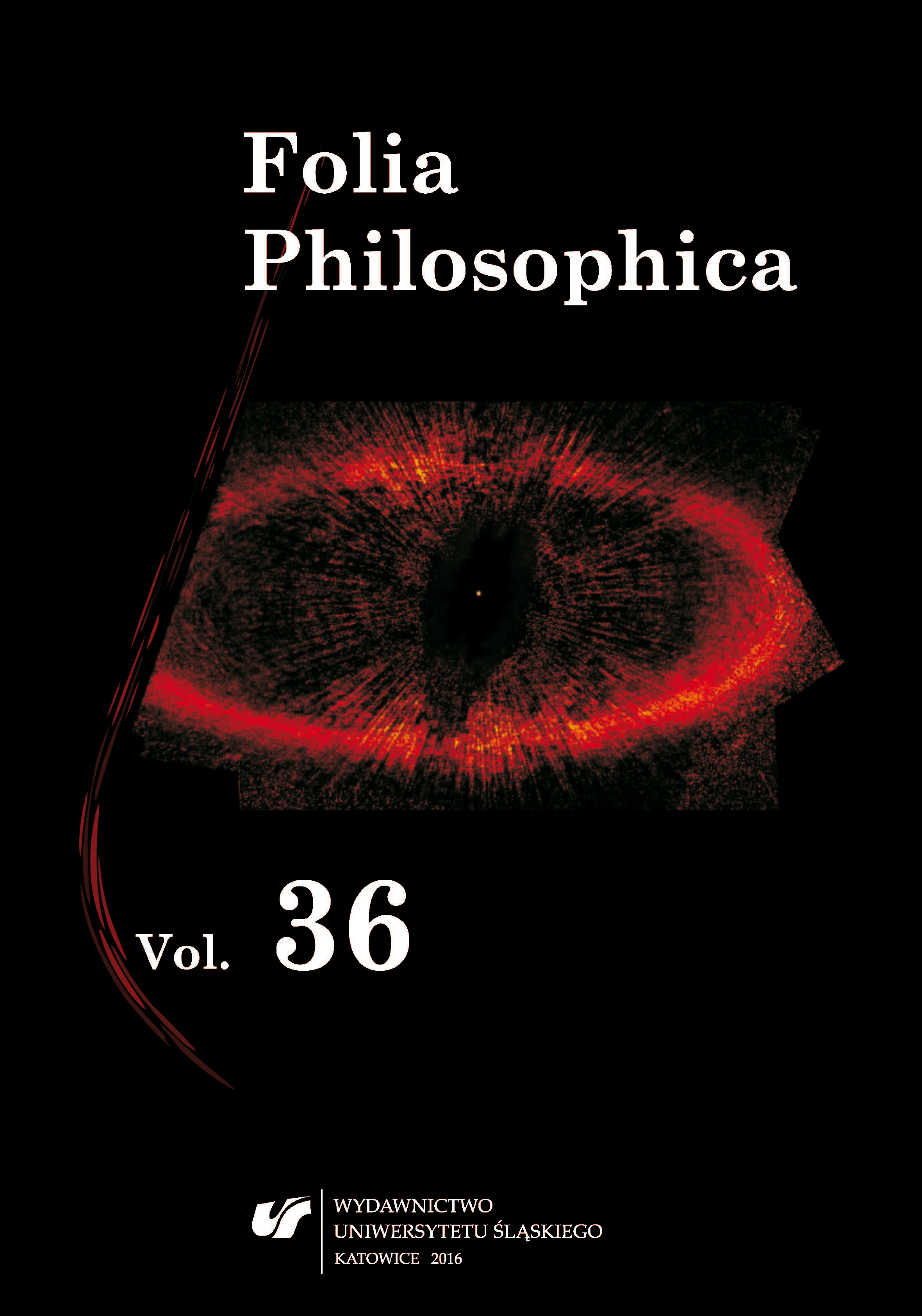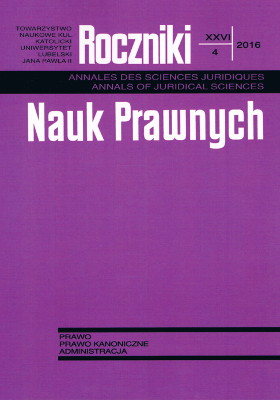
Keywords: Plato; ontology; epistemology; theory of language; name; notion; image
In the paper, I argue for the importance of holistic approach to Corpus Platonicum and such reading of it which leads to the coherent model of Plato’s ontology and epistemology connected with his conception of language. The starting point of my draft of, as I assume, much-needed investigation, is the analysis of Cratylus and theory of truth dependent on proper names. The next step is taking under consideration Plato’s quotation from Hesiod, which leads to the distinction between two ways of substantiating statements given by Hesiod in his two didactic poems. The right name does not have to be given by gods, nor does it belong to the ancient order, even so old as the Golden Age. Instead, it has to belong to the natural order, which makes everything that exists to be as a whole. Hence, it could be created, it could be given by lawgivers or others who understand these valid connections, for example, by an honest sophist or a true artisan of techne– basilike — the philosopher. Accordingly, the proper name is the fruit of hard working; it takes a lot of investigation to find one. This conclusion leads to the analysis of Plato’s methodology of proper investigation that connects dialectics with the geometrical approach: the method of exposing the proper measure. Plato’s epistemology consists in several (possibly seven, as it is shown in Republic) levels of perceiving the world, and bi-polarity of One and Many is crucial for his ontology; hence, there are a few sources of notions. But, as I argue, phantasia gives only false and worthless notions, eikasia is the source of practical ones, and noesis solely creates the true, proper, and essential notion. The notion created by noesis is connected with every other notion, with other forms, and things in the proper measures.
More...
Keywords: Neo-Kantianism; Baden School; Marburg School; Emil Lask; Paul Natorp; Wilhelm Windelband; Hermann Cohen; and Arthur Liebert; logic of philosoph
The article is an attempt to formulate the problem of the philosophy of logic, which plays a very important role in the Neo-Kantian philosophy. It was introduced explicitly for the first time in 1911 in Die Logik der Philosophie und die Kategorienlehre by Emil Lask. The problem was addressed by a number of Neo-Kantians from both the Baden School and the Marburg School. The most important thinkers included Paul Natorp, Wilhelm Windelband, Hermann Cohen, and Arthur Liebert. Later the problem was taken up by representatives of the so-called younger Neo-Kantianism, but the focus is invariably on transcendental logic as formulated by Kant, rather than on formal logic.
More...
Keywords: Neo-Kantianism; Marburg School; General Psychology; consciousness; Paul Natorp
In 1904, Paul G. Natorp (1854—1924) published his lectures on general psychology. This article shows that this purely philosophical, yet systematic work describes those issues of psychologism and psychology which would prove most important to the intellectual life of Europe at the turn of the century, and which Natorp interprets in accordance with the provisions of transcendental philosophy. From the perspective of a representative of the Marburg School of Neo-Kantianism, he outlines the philosophical profile of the subject and the method of psychology. He focuses his discussion on the problem of understanding consciousness and highlights the following elements: the content of consciousness, the consciousness of Ego and the relationship between the content of consciousness and the conscious Ego. His analysis is performed from the bottom up (physiology), depicting the mechanics of the operation of the human nervous system. The article addresses the question of the critical interpretation of Paul Natorp’s general psychology, with emphasis on cognitive and relational functions of consciousness (Bewusstsein).
More...
Keywords: Wittgenstein; scepticism; transcendentalism; Kripke
The article concerns the rule-following paradox, which, according to Saul Kripke, was formulated in “Philosophical Investigations” (PI) by Ludwig Wittgenstein. The article indicates that an interesting starting point for the discussion of the paradox may be the concept of structure from Principia Mathematica and used in the Tractatus. It makes it possible to show how extracting a set of rules and a set of actions designated by them (which together form structure) can lead to paradoxical consequences and difficulties, as well as to identify three sceptical clues based on famous paragraph 201 of the PI. These are: (1) An action can be coordinated with a rule only for a finite number of steps. (2) A specific rule can be coordinated with any action. (3) A specific action can be coordinated with any rule. In order to analyse the first of them, the author evokes Wang’s finitism paradox. The second and third clue refer to the semantic difficulties identified by Saul Kripke in his famous book Wittgenstein on Rules and Private Language and to the problem of recognition of the sign, which Kripke does not mention and which makes the scepticism of the clues more radical. Wittgenstein’s paradox was already implicitly present in the transcendental philosophy of Immanuel Kant, as well as in the later discussions on the foundations of logic and mathematics — in the works of Ernst Schröder and David Hilbert, who pointed out the necessity of the principle of recognition of the sign as a kind of protection against doubt. Although transcendental philosophy, from its Kantian origins, was to be an alternative to both skepticism and dogmatism, transcendentalism is not the only possibility to escape the paradoxical sceptical consequences that Wittgenstein presented. Another solution may be to reject the distinction between rules and actions.
More...
Keywords: chance; art; anti-art; science; rationality; irrationality; Dadaism; phonetic poetry
The paper concerns the relationship between the category of chance in the arts, metaphysics and the sciences, such as mathematics. The chance is here understood as an event whose causes cannot be determined, which is beyond all rule, the quintessence of uncertainty and irrationality long time presented in the metaphysical considerations as the opposition of the rational and predictable. Predictability was the regulative idea of the actions both within the science and the art, whose center was the knowledge of the principles and the rules. Both the art of the chance and the science of chance were seen as a contradiction in terms. The problem of chance became a subject of study of the science in the seventeenth century. But although the origins of the “mathematization” of the chance date back to the seventeenth century, its rational grounding occurred only in the three decades of the last century. In the early twentieth century, chance was still associated with the irrational. Due to this particular association, it became attractive for artists. The first kind of art (or rather anti-art) which turned the chance into a tool was Dadaism. For Dadaists, the art did not consist in producing things according to the accepted rules or any of its previous perspectives, but in recording whatever chance suggested to the artist. The introduction of the new category of chance to the world of art by Dadaism led to the reformulation of the understanding of art in the second half of the 20th century.
More...
Keywords: coincidence; probability; error; fallacy
A lot has been written about coincidence, including research into the probabilistic, methodological, psychological and philosophical aspects of coincidence. This paper presents some aspects of the role of coincidence in the human cognitive system, focusing in particular on probabilistic reasoning and logical and methodological errors in reasoning, associated with the perception and interpretation of coincidence. Due to the nature of things, it is not possible to omit the areas of research mentioned above.
More...


![Conferences: A report from an academic conference „Etyka (w) szkole. Filozofia (w) edukacji” [Ethics for schools. Philosophy for education] (18—19 April 2016, Dąbrowa Górnicza)](/api/image/getissuecoverimage?id=picture_2016_29803.jpg)

Keywords: provincial monuments conservator; monument protection; nature protection
Permission given by provincial monument conservator on the grounds of art 83a The Act of nature protection is an administrative act more formalized than art. 107 Code of Administrative Procedure requires. The legal character of permit to remove trees or shrubs from an area of property entered in the register of monuments is ambiguous. It is impossible to treat such activity merely as an activity of monument protection or merely an activity of nature protection. There are many premises to view such activity as protection of nature despite the fact that permission is given by monuments protection conservator.
More...